Vtoman FlashSpeed 1500
Fastest charging portable power station
Vtoman FlashSpeed 1500
Fastest charging portable power station
While the options are numerous, the Jackery 2000 Plus is the best portable power station I’ve tested overall. That’s because Jackery’s offerings are usually solid in this arena. I have felt in the past that some models have been lacking, or omit features like wireless charging options, but the company has now added the ability to expand the 2000 Plus by adding on external batteries, thereby increasing its overall capacity and capabilities.
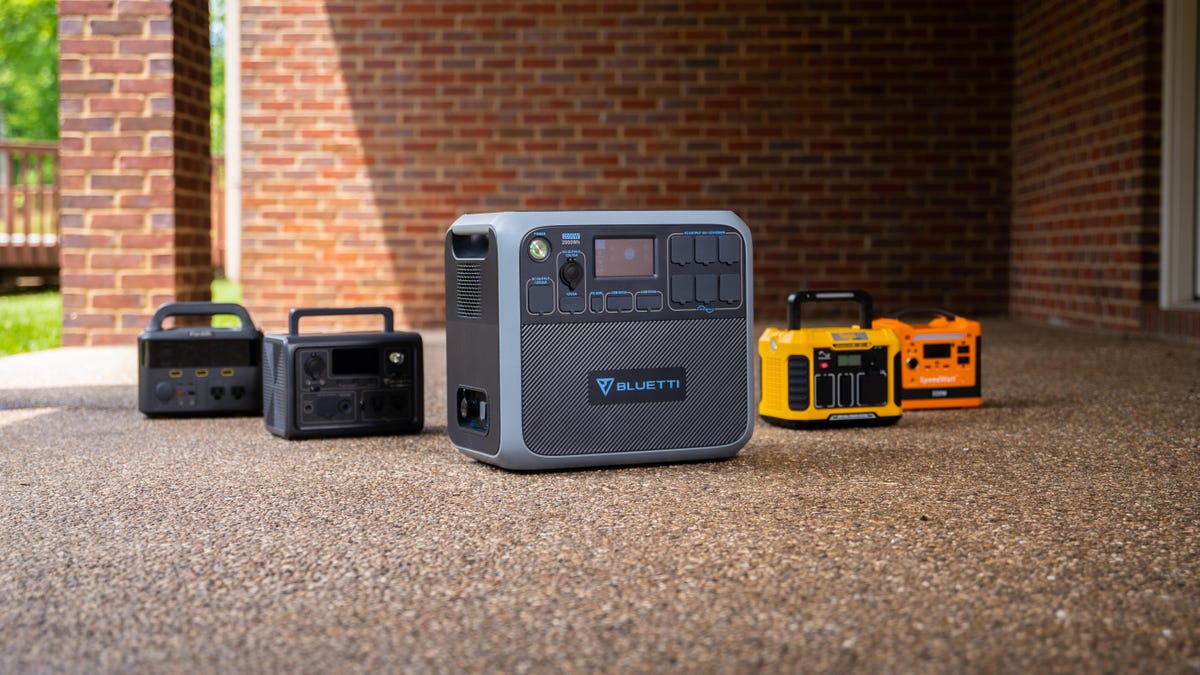
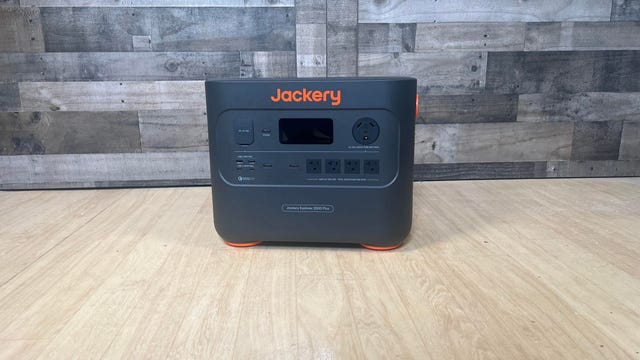
Jackery has been busy with new releases this year, and for some, it might be easy to get confused by its naming system. At first, I thought the Jackery Explorer 2000 Plus was an incremental update to the Jackery Explorer 2000 Pro, but no; this is a decidedly different product. The standard specs and performance are similar at a glance, but coming in at around 20 pounds heavier, the 2000 Plus is built to do more.
First and foremost, with the added weight also comes a telescoping handle and durable wheels. You will also notice the inclusion of a round RV-type AC output rated at 25A. What’s more, if you’d like to pick up two of these, you can also use the new Jackery expansion connector to link up both units and supply yourself with two separate 240-volt outlets (each rated 30A). We have seen this from a few other manufacturers, but I’m happy to see Jackery doing this early in the game.
Similarly, Jackery has thrown in on the modular game by offering external expansion batteries. For now, the 2000 Plus is the only unit that will accept these batteries, but we can assume more are to follow. Each external battery has the same capacity as the base 2000 Plus unit, and currently, you can link up to five additional batteries to the main unit for a staggering 12,256.8Wh. Additionally, you can still combine two sets of the six-piece combos together for that 240-volt capability and an even larger capacity of 24,513.6Wh.
For these reasons and more, the Jackery 2000 Plus is our best large and best overall portable power station.
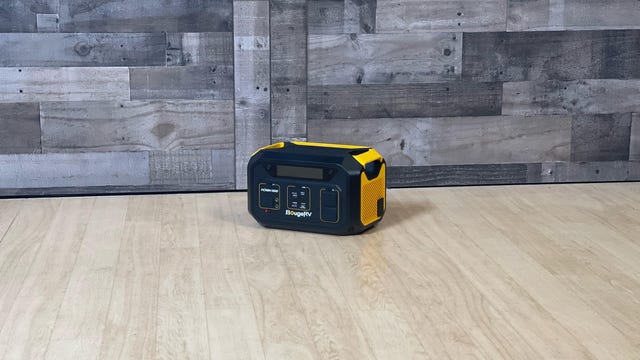
This model is the first new “best small portable power station” in two years, unseating the previous titleholder; the Togo PowerAdvance 346.
In addition to having the wireless charge capability I’m so fond of (especially on smaller units), the Flash300 did well in our tests and sports a blazing fast 0 to 100% charge time of around 45 minutes.
It has all the ports you’d expect, 600 watts of power (in and out) and a clean and informative LED display, which is great to have. It’s also reasonably priced at $300, making it a great entry-level pick.
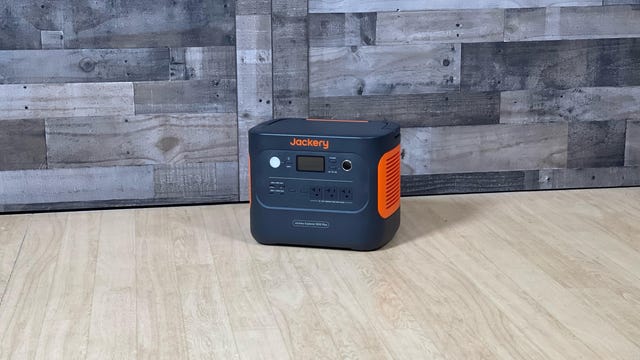
Insert your favorite quote about big things and small packages here.
The 1000 Plus has a stated capacity of 1,264Wh paired with a 2,000W output. The new “Plus” line also supports capacity expansion through external batteries. With this unit, you can add up to three extra batteries for a total of up to 5kWh.
Charge via wall outlet in about one and a half hours; double that if you max out the 1000 Plus’ 800W solar charging input and go that route instead.
Modular is the way to go for most people who need serious power. Jackery’s Plus line continues to impress with its full suite of expandable products.
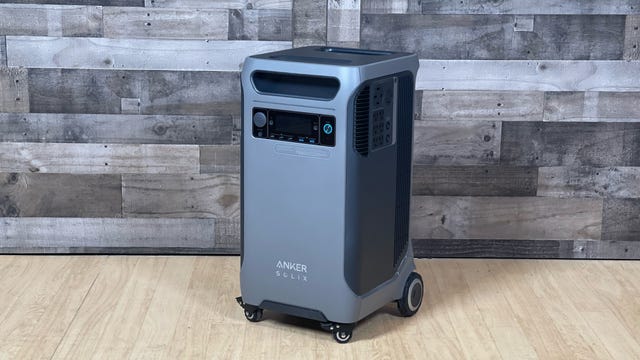
The capacity and capabilities of portable power stations continue to evolve, so I’ve reconfigured the sizing categories for this category and added in “extra-large” since we’re regularly seeing extra-large portable power stations.
There are a few things I am particularly fond of with this unit. For starters you can add up to six expansion batteries for a total of 26.9Wh capacity. The Solix F3800 boasts a nominal power output of 6,000W and the capacity for 120/240 split-phase output in the same unit. It also has both NEMA 14-50 and L14-30 receptacles to directly charge things like your EV, RV or large appliances.
You could also choose to pull double duty, run two of these units and max out the expansion batteries for a total of 53.8kWh capacity. Doing so would double your power output to 12,000 watts.
This is the exact road map for manufacturers to follow, in my opinion, as we talk about developing a flexible energy platform for nearly all versions of residential life.
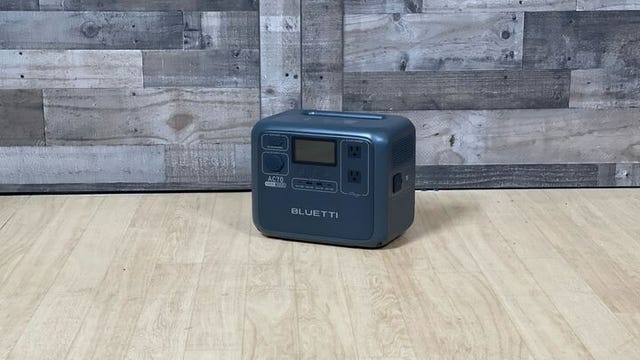
Currently on sale for $499, this station has 768Wh of capacity. (We tested this unit to have about 93% of that capacity as usable. Anything over 90% is excellent.) It also has a rated power output of 1,000 watts (2,000 peak), and a promise to charge to 80% in 45 minutes. In our charge tests, we found that in turbo charge mode, the AC70 hits that 80% charge even faster, at just 33 minutes.
As usual, the interface is simple and the information screen is easy to read. The battery chemistry is lithium iron phosphate, and this unit can additionally take in 500 watts of solar charging power. It also has a ‘”UPS feature” for power switchover of 20ms. (Check on any important medical gear if you plan to use this as a power backup, sometimes those products require switchover times below 12ms.)
All in all, this is a great package with a low price tag, which makes it a perfect budget option.
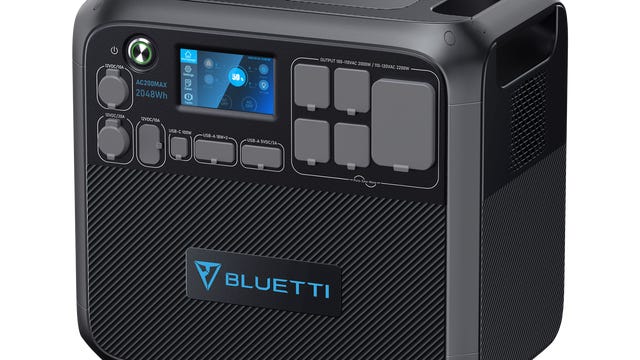
We have seen several Bluetti models take titles in this list over the years.
The AC200 Max did not initially make our winners list when we first tested it earlier this year. But a recent price cut brought the cost down by $300, and it’s currently on sale for another $200 off, bringing the final price all the way down to $1,499. That’s quite the value for what you’re getting.
To be specific, what you’re getting is 2,048-watt hours of capacity (expandable to 8,192Wh), 2,200W output (4,800W surge) and 900W of solar charging power (1,400W solar plus AC). That’s nothing to laugh at in this price range. Most offerings with similar specs sit closer to $2,000 and often are missing the expandability aspect.
The AC200 Max is comparable in form to Bluetti’s larger format AC300 and AC500 units. The AC500 has more to offer, even going as far as showcasing a 50A outlet (still only 120V unless you want to join two units together for a split-phase 240) and the AC300 has more 120V 20A circuits, but the AC200 Max is the only one of these that has any battery capacity built in. For both the AC300 and AC500, an external battery is required.

These days, an increasing number of portable power stations offer UPS or EPS backup protection modes to offer backup power to critical pieces of equipment during power failures. You plug the power station into your wall outlet and the equipment in question into your power station. With UPS, EPS or Backup mode enabled, the power station will kick in and power whatever is plugged into it from its internal battery.
Before you run out and replace your existing UPS units with one of these, you should know that it is almost the same as a UPS. But not entirely. A dedicated UPS could have a transfer time (the amount of time it takes for its battery to take over once the grid power has failed) of anywhere from 0 to 12 milliseconds, and most of them try to stay at 8 milliseconds or faster. The majority of portable power stations now offer transfer times of “less than” 20 or 30 milliseconds. That’s great as far as portable power stations go. For a dedicated UPS that you might want to protect a core piece of tech or an important medical device, you might consider a different solution. By all means, your TVs, laptops, fridges and other devices will be well looked after.
That being said, the Oukitel BP2000 offers, in comparison, a blazing “less than 10ms” transfer speed for its backup mode. Oukitel also works on the modular/expandable fronts and offers lots of options for portable or even static and whole-home energy solutions. Check out a more complete look at the expanding landscape of these companies.
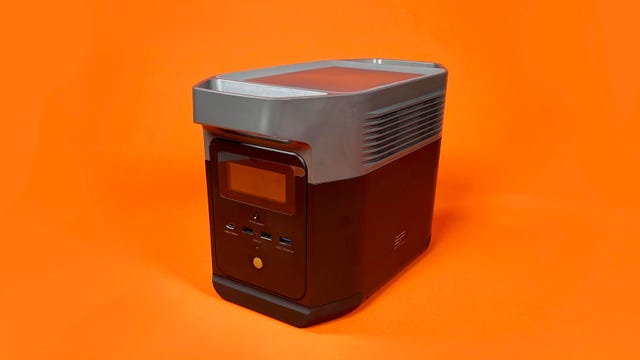
By camping, I don’t mean “glamping.” I’m not trying to power your PS5, beer fridge and jacuzzi. Since solar panels are more common now, and almost every portable power station offers an option to charge with them, we don’t have to be quite as concerned about overall battery capacity or our ability to get to grid power to recharge.
Even if it does carry a hefty price tag (although it’s currently on sale for $549, which is a big drop from its normal retail price of $999), I feel like this model hits a sweet spot of basic functionality, capacity and price. Even though you have the option of charging via solar panels, you can probably survive a weekend trip with a full charge, depending on what you’re powering. That helps when you’re in sub-prime conditions for solar charging, such as overcast or rainy days.
A newcomer nearly unseated the Delta Mini this round and would have, if not for the Mini’s recent price drop. If you’re looking for a good camping option with a bit more power, check out the Pecron E2000LFP. It lists at $1,200 currently but has more to offer than the Delta Mini.
It’s also worth mentioning that even though the GoSun PowerBank 1100 didn’t finish at the top of our testing, GoSun offers a whole suite of camping and solar-friendly equipment, including a nifty folding solar table that I’m hoping to add to an upcoming solar panel best list.
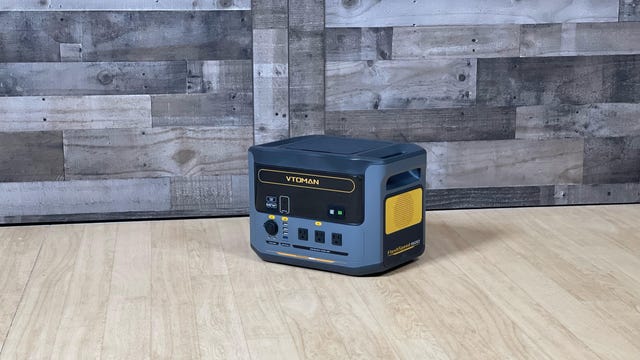
The Vtoman FlashSpeed 1500 is the fastest charging portable power station on our list. Now, looking at our test data, that doesn’t mean that it took less time to charge than any other unit, but, in using our residential AC charging method, it instead indicates the unit that charges the most watt-hours per minute. This method allows the large-capacity units to compete in this category with much smaller units that would charge much faster.
Charging from 0 to 100% in 64 minutes, the FlashSpeed 1500 sees 24.19 watts-per-minute charging from a standard 120-volt, 20-amp residential outlet. A close second was the EcoFlow Delta Pro at 22.64 watts-per-minute. Different EcoFlow and Jackery branded units make up the bulk of the next-best contenders, with a couple of one-off exceptions in the Mango Power E, Zendure SuperBase Pro and Anker PowerHouse 767.
If charging to recover your total capacity is a major concern for you, these are the units to look at. In addition, they all offer simultaneous charging from other inputs like solar or other DC inputs if you need to up your recharge game.
I also can’t overlook the fact that this unit is currently listed at more than 50% off, bringing the price down to just $849.
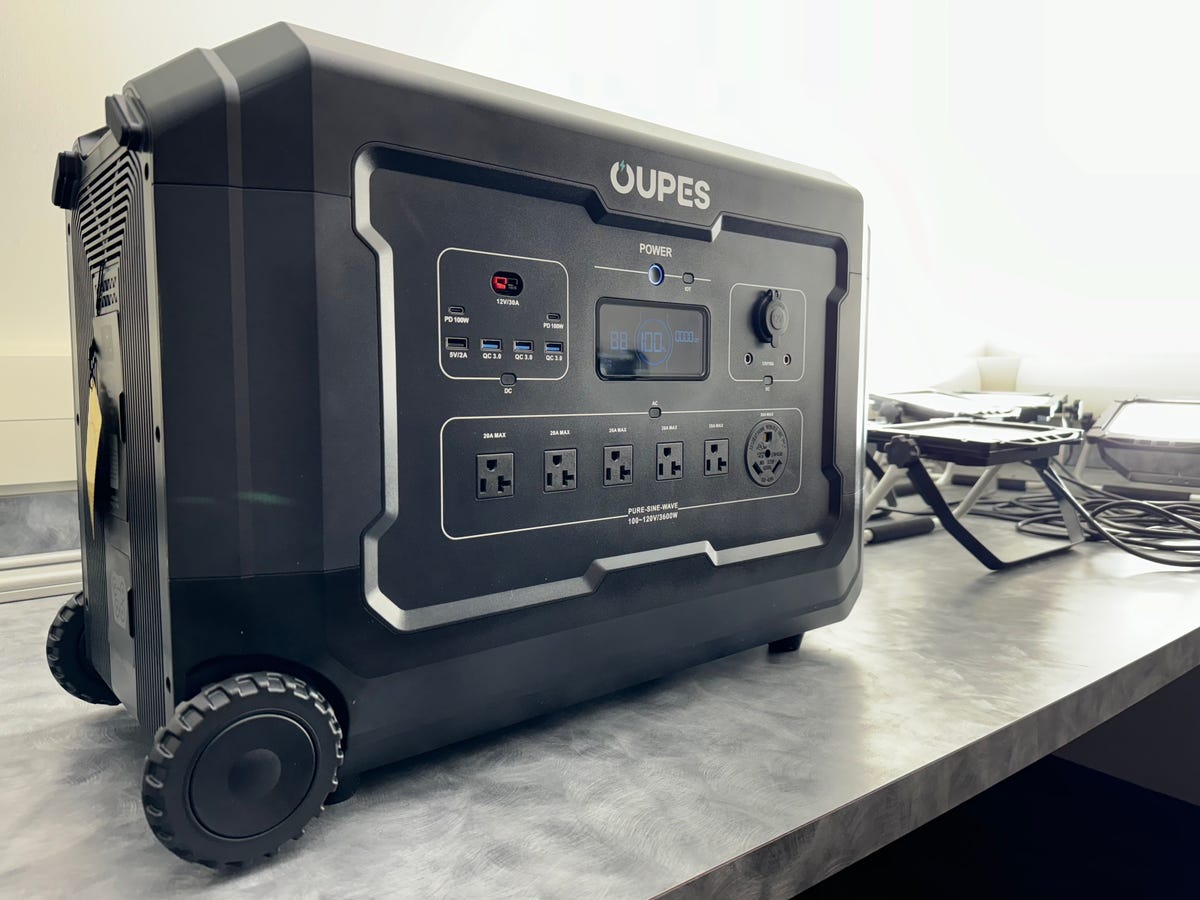
We use 110W LED lights to run a controlled load on each power station during our tests, which allows us to calculate the percentage of power that you can actually use.
A power station’s capacity should be a no-brainer. You should be able to look at a device’s rated watt-hours and purchase accordingly based on your needs. Generally, you can do that. That said, I’ve found that you typically won’t see the entire capacity rating as usable power.
Lots of factors can affect this, and most of them center on how the manufacturer chooses to build their units’ internals to manage their charged capacity. There is some (usually negligible) amount of power that goes to fuel the various indicator lights and readable LED panels on the units. Some of the larger units even have their own operating systems, so it’s almost like powering an additional mini PC on the inside. Other units can have power-saving features where they reduce outgoing bulk power as they come close to depleting their charge.
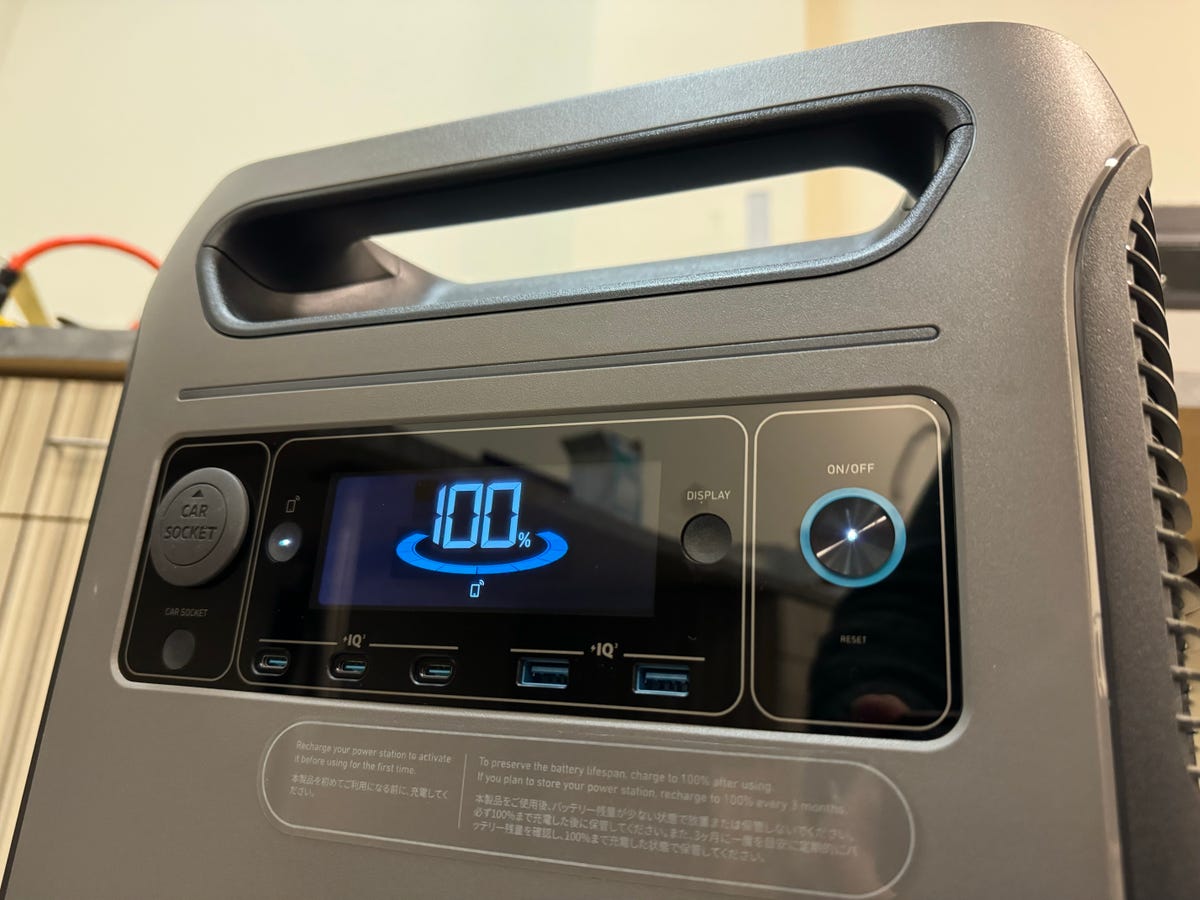
How long does it take to charge each of these things from zero to 100%? Glad you asked!
Charging performance can be nearly as important as knowing your capacity stats. It helps to know how long your device will take to charge, especially if you’re crunched for time or need to be able to charge quickly for whatever reason. Will it take 1 hour or 2? What about 10? Or 12? (That’s an actual number from our tests.)
We report three data points for charging performance. Each unit is plugged in for AC charging and we record how long it takes to reach 50%, 80% and 100% charge. Half-full is probably the least amount of power you’re going to want, especially from the smaller units. 80% is the “magic number” for many rechargeable batteries.
Here’s a simple-ish way to illustrate it: Imagine a swimming pool with room for 100 people, each person representing 1% of the total space. When you first start charging, and that first person dives in, you don’t have much to worry about. You’re not going to run into anyone else, so dive, splash around, whatever you want. But as we add people, it gets a bit more crowded and complicated. You’ve got less room for people. Once you have 80 people in the pool, that next person is going to take a few extra seconds to choose their entry without causing any issues rather than just jumping and hoping no one is in the way.
Each manufacturer deals with this purposeful slow-down in its own way, so you won’t see the same performance changes from one manufacturer to the next. True to the analogy, person number 100 into the pool can sometimes be very slow, taking several times longer to get in than any of his predecessors.
Take a look at the full charge test results below. Charge times are listed in hours, so shorter bars indicate power stations that charge faster. In many cases, you can see how the charge rate is fairly constant between 0 and 50% (red) and from 50 to 80% (yellow), before slowing down from 80 to 100% (green).
Anker 555 PowerHouse (1,024Wh): An increasing number of portable power stations are shipping with LifePO4 batteries, and I love that. The 555 is slower to charge than most of its competitors but sports a 94% usable capacity and an attractive price versus the number of watt-hours; the better to power those six AC outlets.
Anker Solix C1000 (1056Wh): Another good option from Anker. It tested well in our lab and I don’t have any real complaints about this one. Anker currently has it at $250 off, which is great, but it also offers 30-day price matching. You could end up with an amazing deal this time of year.
Anker Solix F1200 (1,229Wh): This unit was previously known as the PowerHouse 757 from Anker, and was also CNET’s previous pick for “best portable power station for backup.” Its UPS mode was one of the earlier units to boast “less than 20ms” switchover time in the event of a power outage. It’s also currently $300 off on Anker’s site.
Anker Solix F2000 (2,048Wh): Previously known as the Anker PowerHouse 767 and previous winner of “best large portable power station” here on CNET. This model has lots to offer by way of features and options — pretty much anything other than wireless charging. It also performed well on our usable capacity and charge time tests.
Bailibatt 300W (257Wh): Another small, affordable unit. The Bailibatt comes in at 84% usable capacity, which is good. But it takes 11 hours to charge, which is…. not as good. If you have specific limited charging needs and plenty of time to recharge, the price tag makes it worth considering.
BioLite BaseCharge 600 (622Wh): Here’s a unit that’s about average with an OK price. It has 87% usable capacity, a Li-ion battery, average features and is maybe a little slow on the charge time. On the plus side, it does have wireless charging.
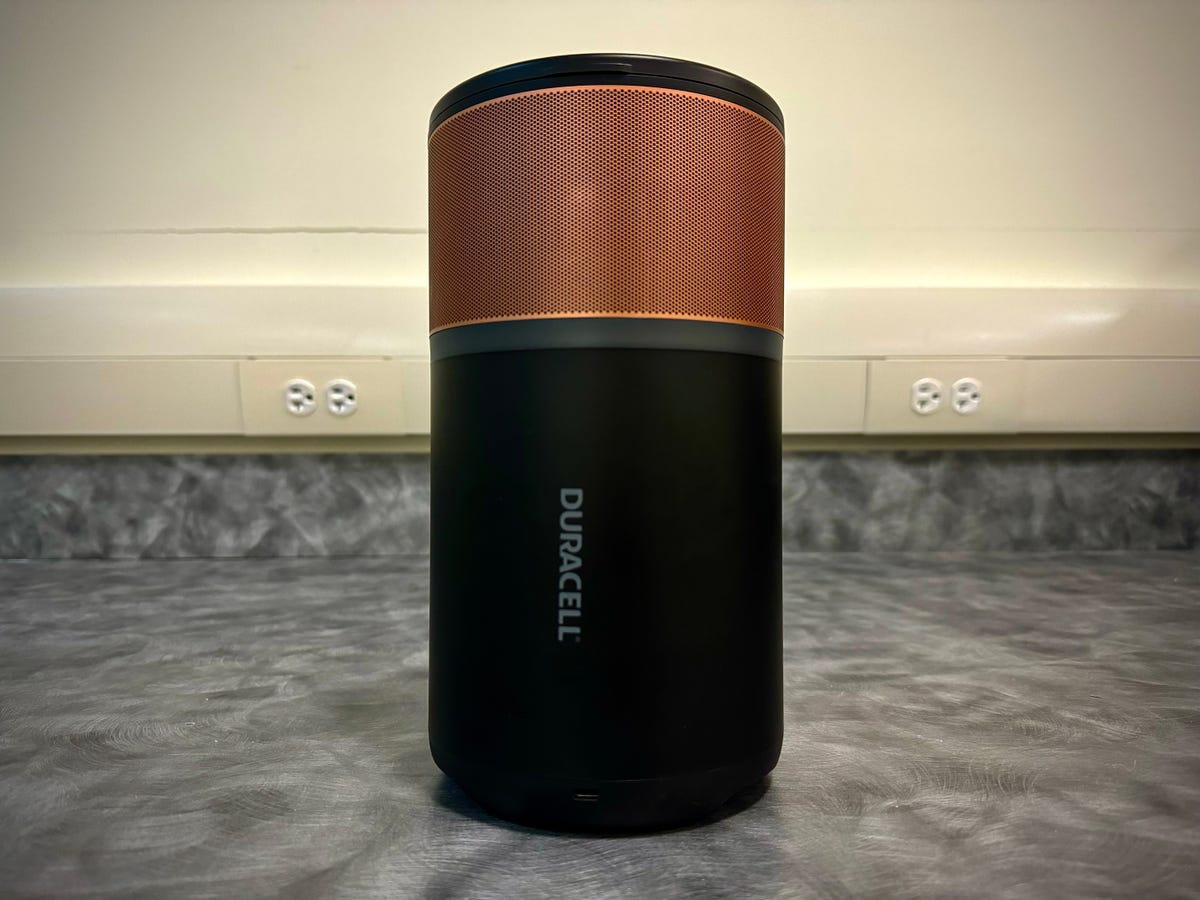
Give Duracell some credit for its likable — and familiar — power station designs.
Duracell M250 (219Wh): Overall, this smaller unit is proportionally comparable to the larger Power 500 Duracell model. The M250 came in at 75% usable capacity, just a couple of points higher than the Power 500. And you’re getting approximately half the capacity for half the price. Charging is also in line, taking around the same time (4 hours plus) to charge half the capacity (at half the input power). I like the cylindrical shape — I’m guessing Duracell wants it to look like that familiar battery profile — and that the lid opens up to allow for power cable storage within the unit.
EcoFlow River Max (576Wh): Blazing fast charging and a low cost per watt-hour make this a reasonable pick, although this unit did test lowest in measured versus expected capacity, putting it at 425 usable watt-hours. Where’d those extra 151 watt-hours go?
Ecoflow River 2 Pro: A previous title holder for “best budget portable power station,” this is still a great pick for anyone looking for affordable power options. It charges fully in just over 1 hour and accesses a respectable 82.6% of the battery’s 768Wh stated capacity.
EcoFlow Delta 2 (1,024Wh): The EcoFlow Delta 2 is similar to the Anker 555 PowerHouse across the board — features, pricing and so on. The main differences you can see from our tests are the usable capacity percentages: Anker with 94% versus EcoFlow with about 70% and charging rates. Both are rated at 1,024Wh. The EcoFlow Delta 2 charged to full in only 86 minutes, 275 minutes faster than the Anker model. Another point for EF is that it can wire in a secondary battery module, taking the capacity from 1,024Wh to 2,048Wh. Expect to pay an additional $800 for that battery expansion.
EcoFlow Delta 2 Max (2,048Wh): Another example of a great product that didn’t capture any of our titles. The Delta 2 Max performed well in all of our tests, and with the ability to expand to 6.144kWh, you’re really walking the line between a portable power station and a whole-home energy solution.
EcoFlow Delta Pro (3600Wh):The EcoFlow Delta Pro is one of the largest portable power stations on our list at 3.6kWh (expandable up to 25kWh), and also happens to be one of the fastest charging. Lots of power, and plenty of charge options to keep that power rolling.
Encalife UAF550 (595Wh): Of the three Encalife chargers, this has the largest usable capacity percentage at 87% but the slowest charging at 1.98-watt hours per minute.
Encalife UAF1100 (992Wh): Industry standard usable capacity here at about 84%, but a bigger drop in the charge capabilities at 3.35-watt hours per minute from its larger sibling.
Encalife YUE2000 (2048Wh): A bit of variation in our model hierarchy groupings with Encalife. As you might expect, charging capabilities do increase with larger units. The YUE2000 being the largest of the three charges relatively quickly, at about 11.13 watt hours per minute. In this series, the usable capacities trend in the other direction, with this unit showing 73% usable capacity.
Enernova ETA 288 (288Wh): This is another example of a hierarchy of models where the smaller units underperform, but larger models improve. This unit took about 3 hours and 40 minutes to charge, but it reached about 81% usable capacity.
Enernova ETA Pro (1050Wh): Moving up a notch, this one has 83% usable capacity and charges 1kW in about 1 hour and 30 minutes. It’s a better showing and about 10 cents cheaper per watt-hour than its smaller sibling.
Enernova ETA Ultra (2150Wh): This is the best of the three, sporting 2160Wh, 87% usable capacity and it charges in under 2 hours.
Energizer PPS700 (626Wh): OK performance and features overall, but one of the lowest-tested capacities, making the usable capacity closer to 477Wh.
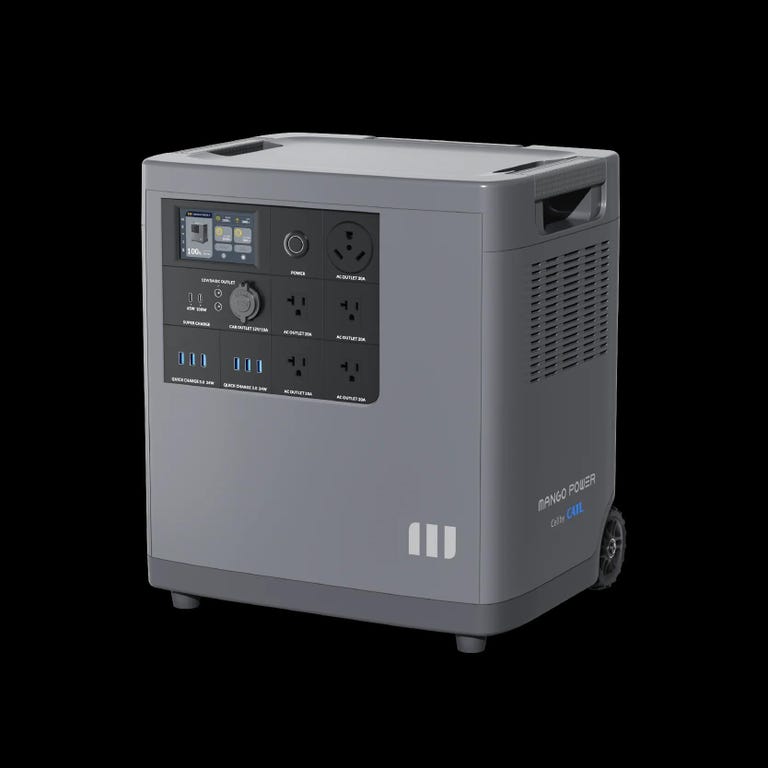
Though pricey, the Mango Power E is our runner-up pick in the fastest-charging category, and capable of charging its impressive 3,530Wh capacity battery from zero to 100% in less than 3 hours.
Mango Power E (3,530Wh): I mentioned this unit earlier as the runner-up in the “fastest charging” category. This thing is loaded with features, even allowing you to provide 240-volt service by linking a second unit. There are also battery expansions for the Mango Power E. The one downside is the price tag, as this unit also comes through as the most expensive portable power station with a list price of $3,999.
Monster Power Grid 300 (296Wh): The Power Grid 300 can be slow to charge but did test at over 90% usable capacity. It has all the bells and whistles you’d expect at this level at a price that’s potentially a tad high.
Oscal PowerMax 700 (666Wh): Another unit that didn’t perform particularly well in our tests, but does boast a ton of features including a “non-stop continuous power supply mode.”
Oukitel BP2000 (2048Wh): This is the first unit we’ve tested from Oukitel (along with its expansion battery — we will be publishing more on expansion batteries soon) and we were pleasantly surprised. To begin, the BP2000 scored an impressive 90% on usable battery capacity and also scored well in our charge tests, taking less than 2 hours to charge all 2048Wh of capacity. Oukitel is also leaning into the modular and expandable approach, allowing you to add up to seven additional units for a total of just over 16kWh of power. As well, the BP2000 boasts sub 10ms switchover time as its UPS feature.
Oupes 600W (595Wh): Not a bad little unit. I love that it has the LifePO4 battery. It performed about average (maybe a hair under par) and I feel like it could be cheaper. The name can be hard to pronounce, though. “Oops” is our best guess.
Oupes Mega 5 (5040Wh): Previous titleholder for “best extra-large power station,” the Mega 5 is a beast. It maxes out at 5,040Wh, with a single expansion battery option, the B5, bringing the total to 10.08kWh. At 4,000W output with a 7,000W surge, you’ll be able to power pretty much anything you want (as long as it uses either a standard 120-volt plug or the round RV type). It also has a large solar charging capacity (4,050W) and in our tests, proved to be one of the fastest charging units we’ve tested (second actually), going from 0 to 100% in 214 minutes, or 3 hours and 54 minutes. That ends up being 23.55 watt hours per minute charged, which is the second-highest rate we’ve recorded.
Pecron E1500 (1536Wh): I will say that I’m a bit torn with this unit. I tested the E2000LFP model first and was impressed with the results. The E1500LFP did not fare as well. Specifically, the usable capacity came in especially low at 68% compared to the E2000 at 94%. Other than that, the charging is beefier, charging at about twice the rate as the other unit. And you still get perks like wireless charging and expandability from 1536Wh up to 7680Wh.
Pecron E2000LFP (1,920Wh): I discussed this unit briefly earlier as the runner-up to the Delta Mini in the “best portable power station for camping” race. It has more options than the Mini and is suitably priced. I’m also a fan of any of the companies that adopt the modular approach with the capability to expand capacity with external batteries like Pecron has done. You can also pick up a rolling caddy for the unit if you’re on the go.
Phyleko ENF1000S (1,024Wh): I’ve seen this body style before in the GoSun 1100 — it feels super sturdy and I do like the larger colorful display. Otherwise, this unit landed just under average in our tests.
Power Cache 300 (293.76Wh): We tested a trio of power stations from Power Cache. The 300 model did well as far as usable capacity goes (91%) but did take over 7 hours to charge. Another upside — it’s affordable, currently on sale for $50 off its $199 retail tag.
Power Cache 600 (642.6Wh): Currently on sale for $150 off, making it cost only $100 more than its smaller sibling. This middle child, however, did show the least impressive performance of all three models coming in at only 72% usable capacity and taking over 8 hours to charge to 100%. But if price is your main concern, it’s an affordable option.
Power Cache 1000 (1075Wh): The largest of the three units, this one performed moderately, coming in at 82% usable capacity and taking about the same amount of time to charge as the small 300 model, which is just over 7 hours. That does mean it charges over 4x faster than the small unit, but 7 hours is still 7 hours. Still affordable, selling at $399 (50% off).
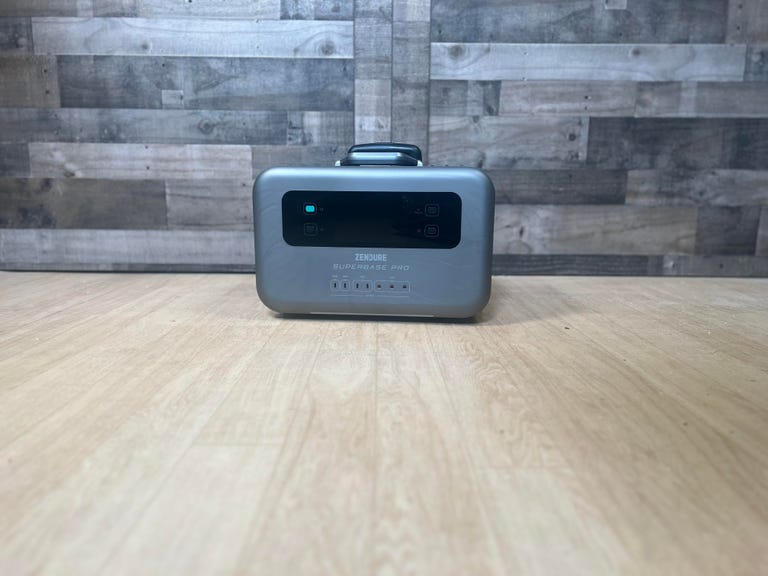
The Zendure SuperBase Pro 2000 is another interesting option, and one of our top-tested large-sized power stations.
Zendure SuperBase Pro 2000 (2,096Wh): The first unit we tested with the Li-NMC battery composition. This unit also just missed the best large portable power station title. It does have a weight-to-capacity ratio likely thanks to the NMC composition and boasts our highest solar charging capacity to date at 2,400 watts. Its telescoping handle and wheels make it easier to manage, but the form makes it a little more compatible with navigating paved walkways versus “off-road” terrain.
70mai Hiker 400 (378Wh): This unit didn’t fare too well in our tests, coming in at about 75% usable capacity (versus the industry standard of 85%) and taking about 4 hours and 30 minutes to charge its 378Wh.
70mai Tera 1000 (1043.9Wh): The larger of the two 70mai units did test better, hitting the industry standard for usable capacity and taking about 20 minutes less to charge nearly three times the capacity of the smaller model.
How many years a portable power station will last depends on three key factors: how well the product is maintained, how often it’s used and the battery type.
We have researched and spoken with several manufacturers and most units boast a 500-cycle lifespan. In some cases, such as the Anker 757, a unit may use LifePO4 batteries compared to the more common Li-ion battery and offer up to 3,000 cycles or beyond.
One cycle means using the product from fully charged to zero charge (or at least 80% in some cases). If you use your portable power station several times a week, it might only last a year or two. If you use it less frequently, it could last for much longer.
Possibly, depending on the fridge and the portable power station.
For example, this standard LG refrigerator has an estimated annual energy consumption of 608 kilowatt-hours. That works out to 1.67 kilowatt-hours per day or 1,670 watt-hours per day.
1,670 watt-hours per day works out to just under 70 watt-hours per hour. If you have a short-term power outage and only need to power your fridge, a 200-watt per hour power station could keep it running for nearly three hours. You’d need a power station with higher estimated watt-hours to run your fridge for longer. A mini fridge would last much longer than a larger model.
Always confirm the electrical requirements for your specific fridge and portable power station before trying this, especially your refrigerator’s peak and startup watts.
A portable power station is essentially a big rechargeable battery that you carry around. Deplete it and it’s useless until you can recharge.
A generator, by definition, is a device that actually converts some type of energy to usable electricity in whatever circuitry you have it connected to. Examples of this would be gas generators (commonly used as power sources for remote areas or as whole-home backups), electric generators (not very common, but they convert some type of mechanical action to electricity) and solar generators, which can use solar panels to power devices or homes — often using a battery to temporarily store the electricity. These batteries are often portable power stations themselves.